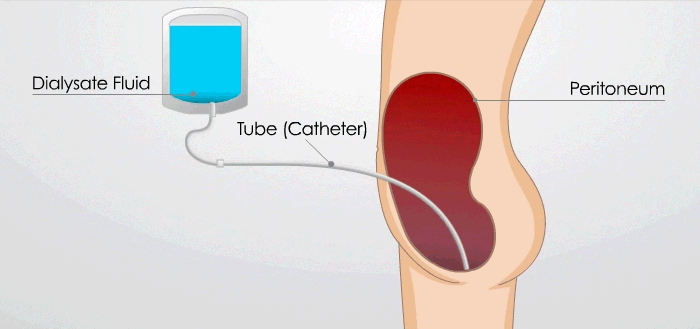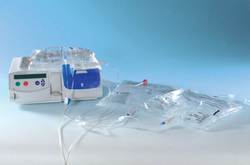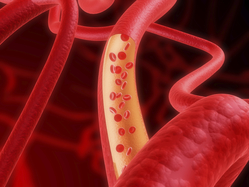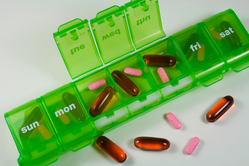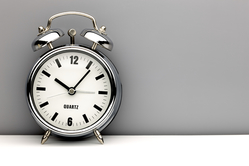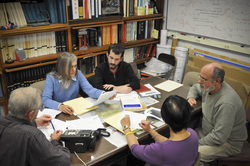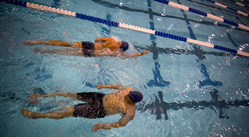The PD Option
Peritoneal dialysis, or “PD,” is one way to replace some of the function of kidneys that don’t work. It is a gentle treatment and is easy to learn and do by yourself at home. Good hygiene is very important for PD success.
You don’t need a partner to do PD. Assist devices can help you to do PD if you don’t see or hear well, or can only use one hand. If you have had major surgery to your belly, PD may not work for you.
Needle-free Treatment Using Your Own Body
Peritoneal dialysis uses your peritoneum as a filter for your blood. A PD catheter—a soft, plastic tube about as thick as a drinking straw, but longer—is placed in your belly by a doctor. A nurse will teach you how to use this tube to fill your belly with sterile fluid.
PD goes on all the time. Wastes and water in your blood flow out of the blood vessels in your peritoneum and into the fluid in your belly. After a few hours, you drain out the used fluid and put fresh fluid in. Draining out used fluid and putting in fresh fluid is called an “exchange.” Each exchange takes about 20 minutes. The rest of the time when you are not doing an exchange, you are free to do other things.
Training for PD
PD is quick to learn—it takes a week or two to learn how to do PD. A nurse will visit your home to help you get ready. Each step of the exchange must be done with great care, JUST as you are taught, to avoid infection inside the belly (called peritonitis). You won’t start PD at home until you and your nurse are both confident that you can succeed.
Once you go home with PD, a nurse is on call 24/7 if you have questions. PD fluid has sugar in it, so you may need to limit starchy foods to avoid weight gain. If you have diabetes, you may be able to add regular insulin to the PD bags.
PD and Your Lifestyle
Now that you understand the basics of how PD works, let’s look at how it might affect your life in the areas of:
- What you can eat and drink
- How many medications you might need to take each day
- How much control you would have over your time
- How work-friendly PD is
- How travel-friendly PD is
- How PD may affect your sex life and ability to carry or father children
PD and What You Eat
When you do PD, you may need to make some changes to what you can eat and drink. Most people who do PD need to eat more protein, because a little bit of protein is lost each time you drain out the used PD fluid. To learn more about protein in your diet, visit the Nutrition Room.
Since PD fluid has sugar in it, you can gain weight if you don’t limit starchy foods.
Your dietitian will go over your lab test results with you each month. If your levels of potassium or phosphorus are too high, you may need to limit foods that have these minerals.
PD and Medications
If you choose PD, you will need to take some medicines each day. Most people on PD need at least some phosphate binders. You may need to take blood pressure pills. You may also need EPO to treat anemia. To learn more about anemia treatment, visit the Pharmacy.
If you have diabetes or other health problems, you will still need to take prescribed medicines for them, though the dose may change if your kidneys stop working.
PD and Your Job
Do you want to be able to work? A work-friendly treatment:
- Is not scheduled during the work day—or can be done at work
- Does not cause symptoms that might make you miss work
- Reduces the chance that you might need to go to the hospital—and miss work
- Helps you to have enough energy to work
PD is work-friendly for all of these reasons. Most people use a cycler to do PD at night, but a daytime exchange can be done in a clean room at work. Since PD is gentle and continuous, it does not tend to cause symptoms that bother you. It is vital to do all of your exchange steps as you are taught to avoid infection. Most people who do PD do not need to be in the hospital often.
PD and Travel
When you do PD, you can bring your treatment with you when you travel. A cycler can go in a car, on a cruise, or on an airplane. With advance notice, the companies that make PD supplies will ship them to you in the continental U.S. If you want to travel outside of the U.S., talk to your VA care team to learn how.
PD, Fertility, and Your Sex Life
People who choose PD report a bit less erectile dysfunction and fewer other sexual problems than those who do standard in-center hemodialysis. Women of childbearing age who do PD tend to have a hard time getting pregnant, but some have. To carry a child to term, more dialysis may be needed than the standard PD prescription.
What You Need to Do PD
You don’t need to live in a castle to do PD. People who live in small apartments or mobile homes have done PD. You do need space to store about 40 cubic feet of supplies. The supply company will bring new boxes once or twice a month. They will unload the boxes and put them where you want them—even upstairs. The first batch of supplies will be the biggest to be sure you have all that you need—later ones won’t be quite as big.
If you are homeless, there is a National VA call center to help you: 1-877-4AID-VET (1-877-424-3838).
You don’t need to have a partner at home to do PD.
Multiple or complex abdominal surgeries can prevent PD success. But, a c-section, hernia repair, or prior transplant should not be a problem if you want to do PD. Talk with your care team if you want to do PD but don’t know if you can.
PD Limits
If you like baths and not showers, PD may not be a good fit for you. Getting your PD catheter wet could cause an infection. So, if you like to swim for exercise, PD may not be the best treatment for you. Talk to your care team about whether you can swim and how to care for your catheter if you get it wet.

You've reached the end of this topic:
Peritoneal Dialysis
- To do peritoneal dialysis (PD), a ______ is placed in the wall of your belly by a doctor:
Not scored The tube is used to put sterile fluid in the belly. Wastes and water from your blood flow into the fluid, which you drain out and throw away. Then you put fresh fluid in.
- People can do PD:
Not scored There are two ways to do PD: by hand, or using a cycler machine at night while you sleep. Some people do a bit of both.
- PD keeps water and wastes in your blood in balance because:
Not scored PD is a continuous treatment.
- The benefits of PD are:
Not scored PD has many pluses. You can do it by yourself, and take it with you on a trip or to work. PD does not use needles. And, most people who do PD can eat more of what they like and drink a bit more fluid than those who do standard in-center hemodialysis.
- PD may not be a good fit if these things are very important to you:
Not scored It’s vital to keep a PD catheter clean to avoid infection. Soaking it in a tub bath or pool is risky. Most centers do not want you to do this.














